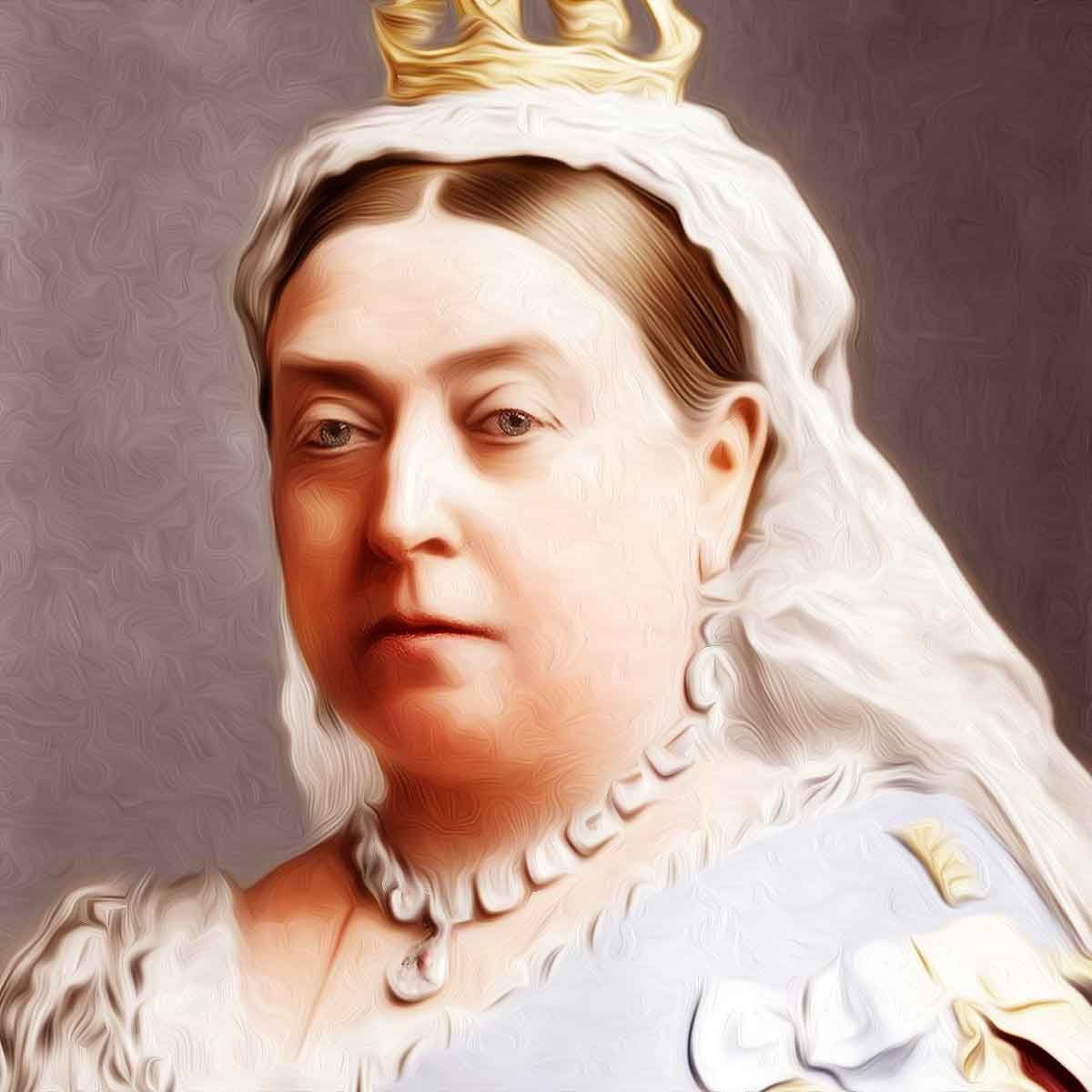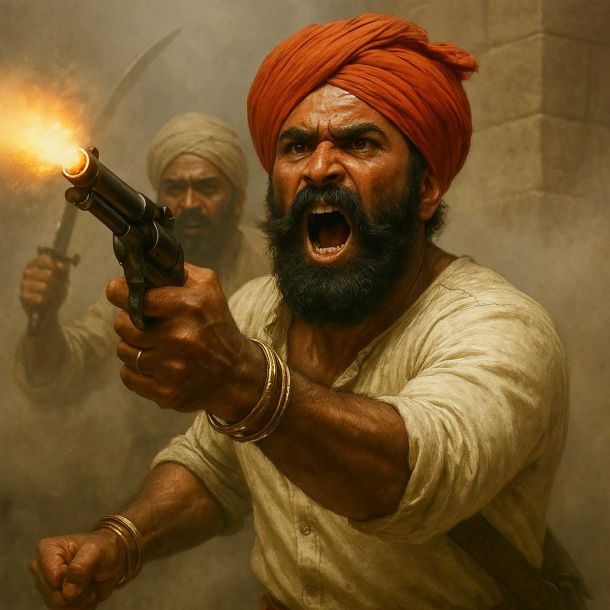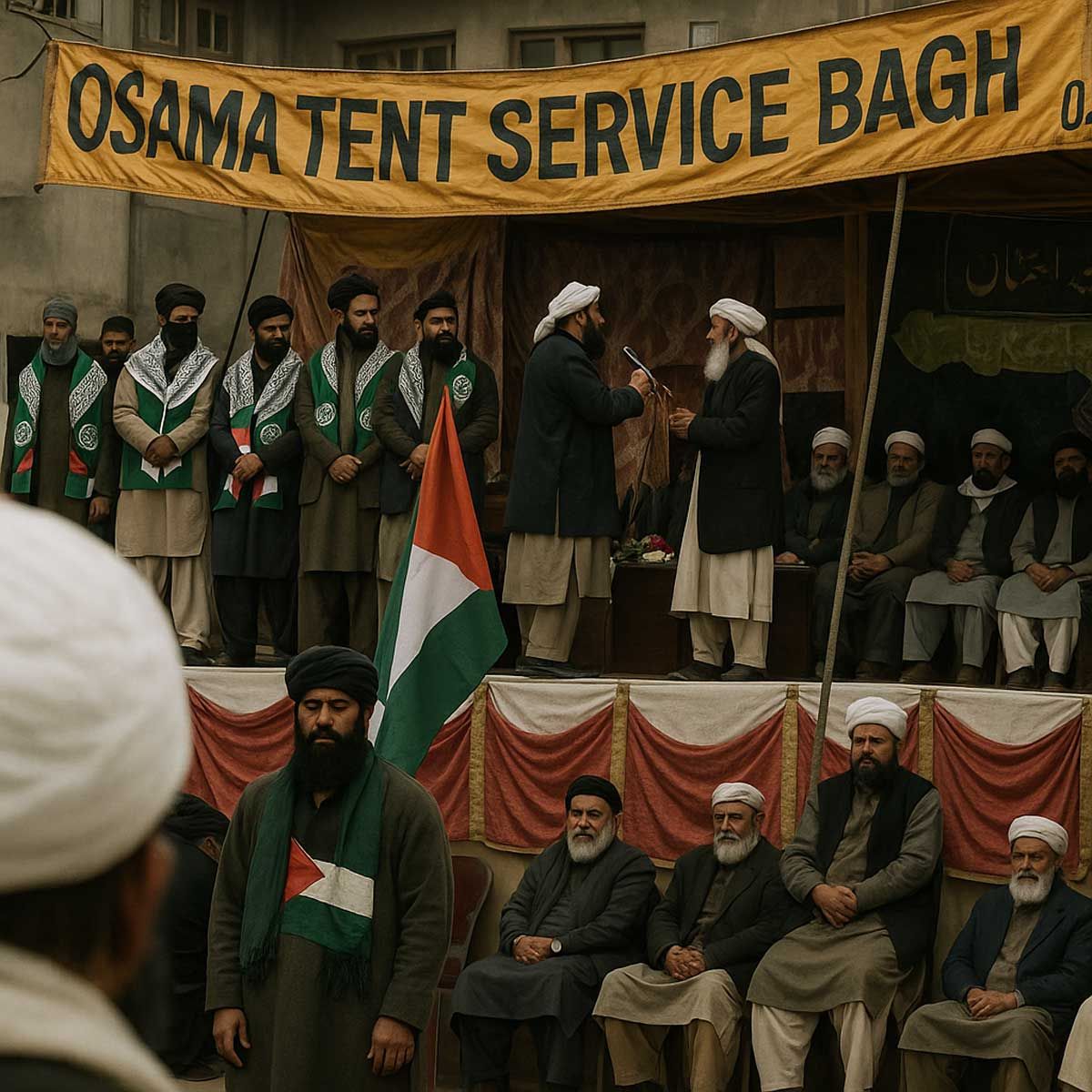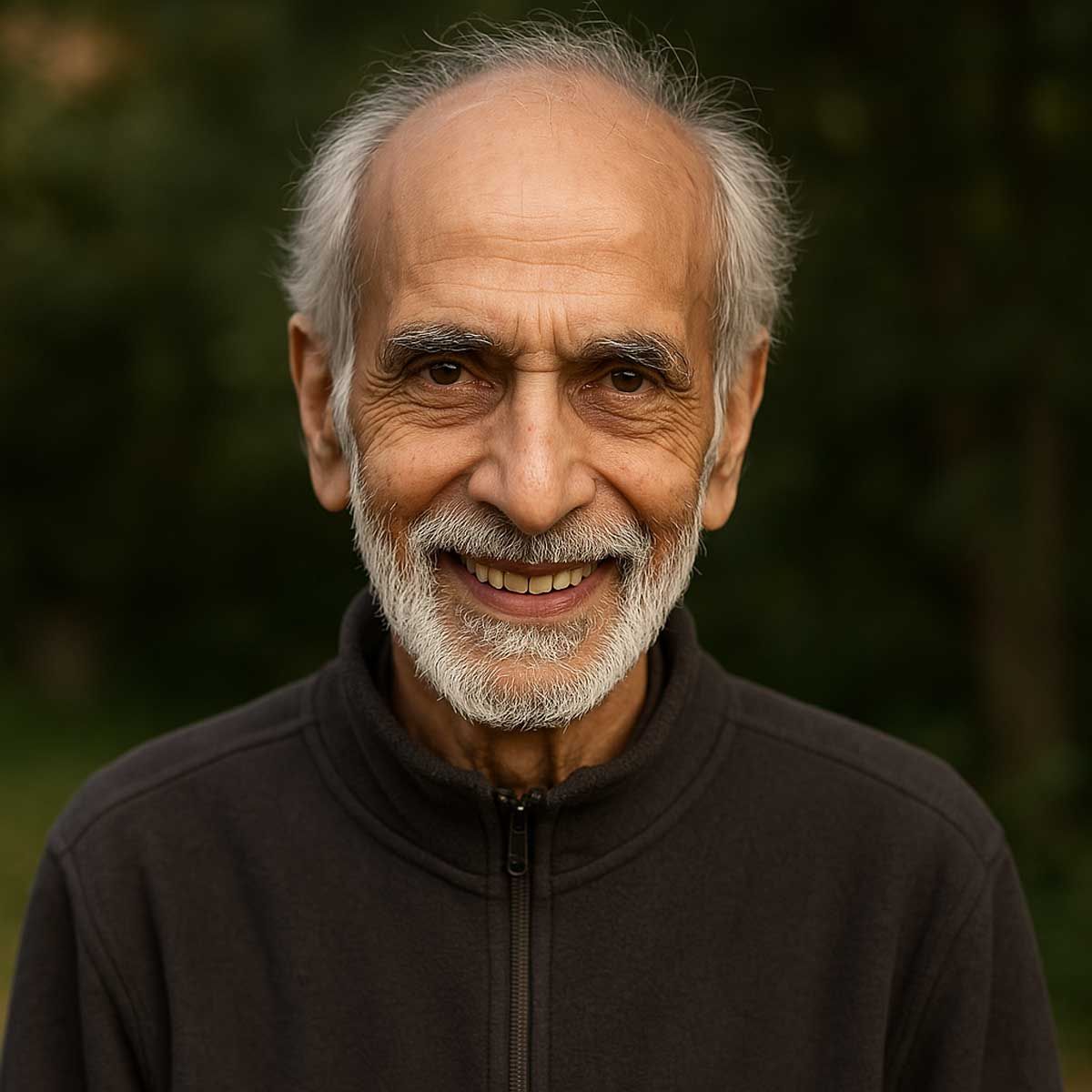Sanatan Articles
Satyaagrah
Written on
Satyaagrah
Written on
Satyaagrah
Written on
Satyaagrah
Written on
Satyaagrah
Written on
JOIN SATYAAGRAH SOCIAL MEDIA
Queen Victoria to her Viceroy, “Though the Muhammadans’ cow-killing is made the pretext for the agitation, it is in fact, directed against us, who kill far more cows for our army, than the Muhammadans"

“Though the Muhammadans’ cow killing is made the pretext for the agitation, it is in fact directed against us, who kill far more cows for our army, etc., than the Muhammadans.”
— Queen Victoria to her Viceroy, Lansdowne, December 8, 18931
In recent years, especially during the first term of Prime Minister Narendra Modi, many cases have been reported of what is called cow vigilantism. In 2019, Human Rights Watch published a 104-page report titled “Violent cow protection in India: vigilante groups attack minorities”2. The report alleged that a violent vigilante campaign was launched against the consumption of beef and against those engaged in the cattle trade. Between May 2015 and December 2018, at least 44 people including 36 Muslims were killed in such attacks, which is about twelve people a year. In a 2016 news article, it was claimed that cow protection was a political tool to unite Hindus against Muslims and establish Hindu cultural dominance3. PM Modi criticized these reported attacks on many occasions. In a speech to mark the centenary of the Sabarmati Ashram in Ahmedabad in 2017, Narendra Modi strongly condemned the incidents of violence that had been reported across India at the time on account of this alleged cow vigilantism4. The Supreme Court of India, in July 2018, issued a series of directives for “preventive, remedial and punitive” measures to address “lynching”2.
In an insightful article in Swarajya in April 2019, Ruchir Ferrero Sharma advocated taking a more nuanced position5. He wrote that India did not have a “cow vigilantism” or “Muslim lynching” problem but more of mob justice and a “meat mafia” problem. It was a law-and-order issue and the victims were rural poor across India, be they Muslim or Hindu. Both cattle owners and cattle thieves were suffering. This was because of poverty, a politically well-connected cut-throat meat industry, and a colonial-era police system more focused on imposing order, rather than serving community needs.
For those who are not immediately dismissive of any respect for cows, it would be interesting to know that the cow is mentioned with reverence and affection many times in the Vedas: Rigveda 1.164.28 is an example — gaur amīmed anu vatsam miṣantam mūrdhānaṃ hiṅṅ akṛṇon mātavā u | sṛkvāṇaṃ gharmam abhi vāvaśānā mimāti māyum payate payobhiḥ|| “The cow bellows for her calf, (who stands) with winking eyes, and lows as (she proceeds to lick his forehead; she utters a cry, as, anxious, she sees the moisture in the corners of his mouth, and nourishes him with her milk”6. It is also a fact that in 2020, ironically, India was among the top five beef exporting countries in the world7. The beef export figures from India though included carabeef (buffalo meat). How did this happen?
 |
The slaughter of cows in India is said to have started with the Islamic invasions. The earliest of these invasions were the naval expeditions on the coasts of Gujarat and Maharashtra during the reign of Caliph Umar (632-634 CE), which were repulsed. Later, Mohammed bin Qasim overcame fierce resistance to occupy Sindh and Multan in 713 CE. The people of Sindh rebelled once he was recalled by the Caliph in 714 CE8.
While cow slaughter during the period when Islam was politically a dominant force in India is widely acknowledged, perhaps not enough is known about cow slaughter during the British Raj. Noted Gandhian thinker Dharampal, whose birth centenary celebrations are ongoing, co-authored a well-researched book with T.M Mukundan titled, The British Origin Of Cow-Slaughter in India, which sheds light on this rarely discussed subject1.
In this essay, we will summarise Dharampal’s preface and epilogue, and Mukundan’s introduction to the book. For those interested, this and Dharampal’s other books can be downloaded from the website dedicated to his centenary celebrations (1). In terms of providing verifiable information on various aspects of Indian society and polity at the onset of the British colonial rule, based on records generated by the British themselves, and contrasting this with the image of a dysfunctional society as portrayed by colonial historians since the 1800s, Dharampal’s contribution is unmatched.
Dharampal starts by mentioning that while the sacredness of the cow is expressed in works like the Vedas and in Indian folklore, British colonial scholarship, since 1860 CE, started a new school of Vedic interpretation which claimed that the ancient Vedas and allied texts advocated feasting on the flesh of cows or bullocks on special occasions. That said, despite the near-daily cow slaughter by the British for 150 years, and the widespread neglect of cows during British rule, the cow still remains holy to most Indians.
The first known killing of cows coincides with the beginning of Islamic invasions. From about 1200 CE to 1700 CE, Islam dominated the polity of northern and western India. Islamic traditions had prescribed the sacrificial killing of a goat or a sheep, and that of a camel, during feasts. The question of cow killing did not arise as the land where Islam arose did not have many cows. As there was hostility between Indians and Islamic conquerors, the latter at times began killing cows purely to insult local sentiments and to demonstrate the conqueror’s power. But the need to keep the same hostility in check induced Muslim kings to forbid cow slaughter every now and then in the areas they ruled. It can reasonably be assumed that the practice of cow slaughter started to wane after 1700 CE with the diminishing dominance of Islam. An impression — though originated during the mid-1800s — persists that cow slaughter at present is a continuance from the days of Islamic dominance. That is not so.
 |
European Mischief: Modern Europe’s interaction with India commenced with the Portuguese ships arriving in Calicut in 1498. This is also about the time when Europe began to plunder and decimate indigenous peoples like those in the Americas, Africa, countries of Southeast Asia, and later in Australia and New Zealand. Except for the holding of Goa by the Portuguese, and the establishment of trading posts, none of the other European powers had gained a substantial foothold in India till 1750 CE. Things changed quickly thereafter. The Nawab of Bengal became a British appointee after 1757 and the British were ruling most of South India by 1799.
In 1780, Warren Hastings (appointed British Governor-General of India in 1773) came in close contact with the rulers of Jaipur, Jodhpur, and Udaipur in Rajasthan. Overwhelmed by the Marathas, they were interested in friendly relations with the British. The Maharajah of Jodhpur and others expressed the wish that in any formal treaty the British must pledge that they will not engage in cow slaughter in their territories. Nothing much came of these negotiations. When similar discussions were taken up again in 1818, the British had become virtual rulers of most of India. The British then informed that while they would exercise care to ensure that no cow slaughter ordinarily took place, they could not have this stipulation written in any treaty. It is quite possible that while not much was mentioned, several such promises were made by the British to many Indian rulers in the late-1700s and early-1800s.
With cow slaughter seemingly having declined along with the collapse of Islamic power around 1700, state-sponsored and regulated cattle slaughter would have started depending on British military needs. This likely happened sometime after 1750 in the Madras area and then spread in the areas of Bengal, Bihar, and Orissa. By 1800, factory-type slaughterhouses might have been constructed in places where there was a concentration of British soldiers. This probably led to an increase in the demand for professional butchers. They could be sourced from Muslim communities who engaged in such tasks, Indian converts to Christianity, or from among Hindus whose profession was hunting, or those who skinned dead animals.
Soon after the British gained territorial control over various parts of India, they introduced extortionist policies that reduced Indian peasants to paupers. The British induced famine of 1769-70 in Bengal was a consequence of the hoarding of grains and playing the market. It starved to death more than one-third of the population of Bengal. Since then, most of the territories under British control in India were in a continuous state of distress. From about 1770 to 1940, a large part of the peasantry became landless and had to rely on uncertain unskilled labor. Also, since 1750, there was a steady demand from the British for strong bullocks and bullock carts for transporting military baggage and other supplies over long distances. Except in places where railway tracks were laid down (from 1850 or so), such forced labor continued in most of British India till about 1930.
Dharampal makes a special reference to the letter written by Queen Victoria to her Indian Viceroy in December 1893 in the backdrop of the “Anti-Kine Killing Movement,” which ran from 1880 to around 1894. The letterforms a part of the book by Dharampal who thanks Queen Victoria for revealing the truth about widespread cow slaughter in India. Queen Victoria had written, “Though the Muhammadans’ cow-killing is made the pretext for the agitation, it is in fact, directed against us, who kill far more cows for our army, etc., than the Muhammadans.”
 |
In his monumental work “Pakistan or the Partition of India,” published in 1945, Dr. B.R. Ambedkar did mention that Muslim insistence on cow slaughter, despite Islamic law not requiring it for sacrificial purposes, was one noticeable illustration of the spirit among Muslims to exploit the weaknesses of the Hindus. Another was the objection to playing music near a mosque, which incidentally was permitted in Muslim countries. Dr. Ambedkar also referred to a letter written by Jawaharlal Nehru to Muhammad Ali Jinnah, in 1938, wherein items that were matters of dispute and required settlement were tabulated. One of these was the demand that Muslims should have the freedom to perform cow-
slaughter14.
Hindus, Muslims, and most British officers were well aware that the anti-kine killing agitation was actually against the widespread slaughter of cows to supply beef to over 100,000 British army personnel in India, as well as to several hundred thousand British civilians living in India to assist in the running of the British imperial system.
A careful reading of the British intelligence documents about the period of 1880-1893 from Punjab, Bihar, and Uttar Pradesh suggests that any Muslim insistence on cow slaughter since 1880 was the result of British insistence that Muslims should continue to observe what the British called “the Muslim tradition of killing the cow”.
Europe had been a major consumer of beef for some two-thousand years. The killing of cows, especially by the British, started soon after they began to establish themselves in various parts of India in the early-1800s. The number of British army personnel at the time was around 20,000. This number is said to have increased to 45,000 by 1856, and to 100,000 by 1858. This increase in the numbers of army personnel led to a rise in both cow slaughter and in the number of bullocks impressed to serve the transport needs of the British army. The sense of alarm among Indians found expression in the protests against cow slaughter by the Kukas (Namdhari Sikhs) and later by Swami Dayananda Saraswati. It also led to the formation of the Go-samvardhini Sabhas.
While the “Anti-Kine Killing Movement” was defeated in 1893-94, it continued haltingly until Indian independence from British rule in 1947. In 1950, the Government of India advised various state governments not to close down slaughterhouses as the cowhides obtained from slaughter were of greater value than dead cattle. A Government of India committee established in 1954 to suggest ways to stop cow slaughter recommended that as India had little fodder and cattle feed, it could maintain only 40 percent of the cattle it had. The remaining 60 percent should be culled. Thereafter, supported by Supreme Court judgments, the Indian Government began permitting the slaughter of cows (as well as other animals) on an even larger scale for a variety of reasons.
Dharampal mentions that the book includes three major documents regarding the “Anti-Kine Killing Movement” of 1880-94. The first is the report of the Superintendent of the Thagi & Dacoity Department dated August 1893. The second is a narrative of the happenings in Punjab from 1882 to 1893 as reported by the Punjab Intelligence Department. The third is a report on the events in some areas of Bihar from 1886 to 1893. Besides these, the 1893 letter from Queen Victoria to her Viceroy in India, the minutes of Viceroy Lansdowne, and some other materials are also reproduced in the book. Dharampal concludes by saying that he discovered this material in the India Office library archives in London (in the 1970s) and in the private papers of Viceroys Lansdowne and Elgin. Further material on this “Anti-Kine Killing Movement” may be found in the papers of the Thagi & Dacoity Department of the Government of India (1840-1910).
 |
In the introduction to the book, T.M.Mukundan elaborates on the role of the Kukas (Namdhari Sikhs). They started protesting against the British in the 1860s. For them, a ruler who permitted cow slaughter did not deserve to rule. In 1869, a Kuka uprising proclaimed Sikh Raj at Ferozpur in Punjab. In 1870, some Muslim butchers were murdered in Amritsar. In 1872, several Kukas who had confessed and were held responsible for the murders were executed by the British government. Sixty-three Kukas were blown from guns and several hanged. At around the same time, many sanyasis too started to campaign against cow slaughter. More prominent among them was Sriman Swami from the south and Swami Dayananda Saraswati, the founder of the Arya Samaj. By the early-1880s, most of them came to be linked with the Gaurakshini Sabhas.
The Gaurakshini Sabhas played a major role in extending the movement all across North India, particularly in Uttar Pradesh and Bihar. Sanyasis and many government servants played an important role in the formation of these sabhas. Wealthy Hindus contributed large sums of money to these sabhas. Initially, these were involved in providing shelter to the cattle being taken to slaughterhouses, and in petitioning the government. Later on, they became more assertive and urged Hindus not to sell cows to butchers or middlemen. Hindus who violated Sabha rules had to pay cash penalties and be subject to social pressures. Some Sabha meetings also had Muslim participation.
From 1880-to 94, Arya Samaj was one of the first organizations to campaign against cow slaughter. Subsequently, Arya Samaj was joined by various other Hindu organizations. Arya Samaj founder Swami Dayananda Saraswati had been concerned about cow protection since 1866. Around 1881, Swami Dayananda wrote a booklet called Gau Karunanidhi, in praise of the cow and against cow slaughter. Its first half made an economic argument for a ban on the slaughter of cows and other useful animals. The argument was supported by references from scriptures, and opponents’ views were elaborately countered. Swami Dayananda emphasized that the Vedas did not prescribe any rite involving the killing of animals or meat-eating. The second part of the book contained laws and bye-laws for the sabhas. Swami Dayananda insisted that membership be kept open to all communities.
Swami Dayananda also planned to present a memorandum to Queen Victoria, the British Parliament, and the British Governor-General of India, by collecting 100,000 signatures. This document was published in Bombay in March 1882. It made the case against cow slaughter and asked the government “to quickly put an end to the slaughter of cows, bullocks, and buffaloes”.
Another related agitation was reported from Lahore and Amritsar during this time. It was against the use of sugar manufactured by the European method in which cattle bones were said to be used during the process of refinement.
In the remaining section of the introduction, Mukundan describes in some detail the “Anti-Kine Killing Movement” in different parts of India — Punjab, Kashmir, Uttar Pradesh (NWP), Central India (Madhya Pradesh and Maharashtra), and Bihar. He also elaborates on the functioning and funding of Gaurakshini Sabhas, especially in Bihar.
 |
Mukundan concludes by throwing some light on British responses to this movement. Apart from referring to Queen Victoria’s letter dated December 1893, he also mentions what the British Viceroy said in a minute a few days later. The Viceroy had written, “…I doubt whether, since the Mutiny (of 1857), any movement containing in it a greater amount of potential mischief has engaged the attention of the Government of India…”.
When the movement seemed to subside after 1893, Gibbon, an officer in the Champaran District of Patna Division wrote this in his report: “We English are a lucky race; thank God, they have rushed it as they have”. Mukundan stresses that during the period of British occupation, Indian people showed no lack of resistance. The “Anti-Kine Killing Movement” was just one example. But this resistance was neither lethal nor brutal. It was organized differently by the Indian view of the oneness of all beings, with each being having sanctity. Living was not considered a constant struggle for survival. Coming from this perspective, Indian people failed to understand and deal with the British. A nationwide movement faded away, which allowed the British to retain their “luck”.
In the epilogue, Dharampal observes that during the 150 years or more of British rule, Indian society was split apart. After the induced destruction of the Indian education system, British authorities began to determine both the curricula and the texts which were to be taught. In 1857-58, British Prime Minister Lord Palmerston advised the British Indian government that in the matter of the content of Indian textbooks all Indian “mumbo-jumbo” must be discarded immediately. Soon, an increasing number of Indians began to imbibe alien values through the new education system. The feeling for the cow, as a symbol of auspiciousness and sanctity, became a casualty. For many Indians, from about 1900 onwards, a cow was thought of only in terms of the milk produced. The European breed, considered to be more productive in terms of milk output, had begun to score over the Indian cow.
There were extensive discussions in the Constituent Assembly during 1948-49 on the issue of banning cow slaughter. Practically, all the members, including prominent Muslim members, were for such a ban. But the alienated educated elite who spearheaded the drafting of the Constitution left it to the constituent states of the republic rather than letting it become an integral part of the Indian Constitution.
Dharampal posits that a cow-slaughter ban at present would be truly meaningful only if it is accompanied by India becoming consciously aware of the fundamental contradictions between alien thought categories with which she is burdened today and those which have been India’s own since early times, and which are still familiar to India’s people. He advocates the application of our minds towards a basic reorganization of India’s society, linked with India’s paramparas, values, and civilizational outlook.
 |
A case against cow slaughter can be made today based on the Hindu view that the Divine pervades all beings and things. All beings vibrate with the same cosmic consciousness. Humans have evolved beings because they have the potential to grow into this universal consciousness and achieve enlightenment. It is this view that finds expression in the Hindu way which treats all life as sacred and emphasizes ahimsa (absence of harm).
The Preamble to the Constitution of India was amended by the Forty-second Amendment Act in 1976. The description of India was changed from a “sovereign, democratic republic” to a “sovereign, socialist, democratic republic”9. Leaving aside issues of special constitutional rights for minorities, communalism, and appeasement which have characterized debates about “secularism” in the Indian context, the term “secularism” finds its origins in the history of Europe and Christian theology. It will be interesting to note what the eminent twelfth-century French theologian, Hugh of St.Victor, had to say10: “There are two lives, one earthly, the other heavenly, one corporeal, the other spiritual…. To the earthly life belong all things that are earthly, to the spiritual life all spiritual goods…. The one power is therefore called secular, the other spiritual”11.
Sri Aurobindo wrote a critique of the above view, saying, “The European is proud of his success in divorcing religion from life. Religion, he says, is all very well in its place but it has nothing to do with politics or science or commerce, which it spoils by its intrusion; it is meant only for Sundays when, if one is English, one puts on black clothes and tries to feel good…. But after all, God does exist and if He exists, you cannot shove Him into a corner and say, ‘That is your place and as for the world and life it belongs to us’12”.
It will be difficult for jurisprudence in India to draw from a “secular constitution” founded on the premise that there exist two domains in social life, a public domain governed by the state, and a private domain where individuals are free to practice their religious beliefs, to give credence to the Hindu worldview wherein there is the unity of the material and the spiritual, and pronounce a judgment on cow-slaughter on this basis.
Thanks to studies conducted in recent years, several “secular” arguments too can be made in favor of plant-based diets, and, by extension, against cow slaughter. For instance, in a 2003 study, noted ecologist David Pimentel concluded that a meat-based food system requires more energy, land, and water resources than a Lacto-Ovo vegetarian diet (vegetarians who avoid all animal flesh but do consume dairy and egg products). In this limited sense, a Lacto-Ovo vegetarian diet is more sustainable than the average American meat-based diet13.
Of course, any debate on cow slaughter must take cognizance of the fact that the beef and leather industries are the sources of livelihood for many today. Further, cow slaughter bans in several Indian states have led to a huge stray cow problem. Many cows who are no longer deemed economically useful are let loose on the roads by their owners.
It is hoped that discussions on this delicate subject are conducted by all parties civilly, within the parameters of the law. While the constraints imposed by the socio-economic realities of today and by existing jurisprudence ought to be acknowledged, perhaps some legitimacy can also be accorded to the larger Hindu philosophical view.
Acknowledgments:
The author expresses sincere thanks to Prof. Gita Dharampal for granting permission to publish a summary of some sections of Dharampal and T.M.Mukundan’s The British Origin of Cow-Slaughter in India, with some British documents on the Anti-Kine-Killing movement 1880-1894.
References:
- The British Origin of Cow-Slaughter in India - dharampal.net
- Human Rights Watch. “India: Vigilante ‘Cow Protection’ Groups Attack Minorities,” - hrw.org
- Hindustan Times. “New symbol of Hindutva project: Is Gau-Raksha the new Ram Mandir?” - hindustantimes.com
- Firstpost. “Narendra Modi warns gau rakshaks: PM says killing in the name of cows unacceptable; can’t take the law into your hands,” - firstpost.com
- Swarajya. “India doesn’t have a cow vigilante - Muslim lynching problem but a mob justice-meat mafia problem that can be solved,” - swarajyamag.com
- “The Hymns of the Rigveda,” - hinduismpedia.kailaasa.org | sanskritweb.net, page 89
- Beef2live. “Ranking of Countries that Export the Most Beef (USDA),” - beef2live.com
- “Heroic Hindu Resistance to Muslim Invaders, 636 AD to 1206 AD”, Sita Ram Goel, 2000, p. 10
- Wikipedia. Forty-second Amendment of the Constitution of India - en.wikipedia.org
- Britannica. Hugh of Saint-Victor - britannica.com
- India, that is Bharat, J. Sai Deepak, 2021, Loc 1483, Kindle edition
- Sri Aurobindo and India’s Rebirth, Michel Danino, 2018, Loc 768, Kindle edition
- Sustainability of meat-based and plant-based diets and the environment — PubMed (nih.gov)
- Pakistan or Partition of India, Dr. B.R.Ambedkar, 1945, Loc 5746 & 5848, Kindle edition
 Support Us
Support Us
Satyagraha was born from the heart of our land, with an undying aim to unveil the true essence of Bharat. It seeks to illuminate the hidden tales of our valiant freedom fighters and the rich chronicles that haven't yet sung their complete melody in the mainstream.
While platforms like NDTV and 'The Wire' effortlessly garner funds under the banner of safeguarding democracy, we at Satyagraha walk a different path. Our strength and resonance come from you. In this journey to weave a stronger Bharat, every little contribution amplifies our voice. Let's come together, contribute as you can, and champion the true spirit of our nation.
 |  |  |
| ICICI Bank of Satyaagrah | Razorpay Bank of Satyaagrah | PayPal Bank of Satyaagrah - For International Payments |
If all above doesn't work, then try the LINK below:
Please share the article on other platforms
DISCLAIMER: The author is solely responsible for the views expressed in this article. The author carries the responsibility for citing and/or licensing of images utilized within the text. The website also frequently uses non-commercial images for representational purposes only in line with the article. We are not responsible for the authenticity of such images. If some images have a copyright issue, we request the person/entity to contact us at This email address is being protected from spambots. You need JavaScript enabled to view it. and we will take the necessary actions to resolve the issue.
Related Articles
- To be on the wrong side of history is a choice – How 21st-century invaders are capturing Chhatrapati Shivaji’s forts the way even Mughals didn’t and attempting to reclaim an invader identity unapologetically
- Literary genius Charles Dickens though a gifted story-teller but in reality, was a genocidal racist and Christian fundamentalist who hated Hindus and wanted to exterminate this race from the face of the earth
- Mohammedans trying to shield culprits of anti-Hindu atrocities by spreading paranoia over Bajrang Dal rally in Haryana’s ‘Mini Pakistan’
- Ashok Gehlot-led Rajasthan Govt introduces new regulations for keeping cows in 213 cities across the state: one cow per household, annual fees, strict fines, mandatory tagging, cow dung to be taken out of the city
- 'Muh me ram bagal me chhuri' - Gandhi’s politics is hollow and noisy, full of treachery and deceit’: Read what Dr. Ambedkar said about the ‘Mahatma’
- Harmonizing Nathuram Godse: Why India should move beyond denouncing him, a man who altered the course of not only the politics of the country but the very history of the Hindu Civilisation and, by extension, the world at large
- Kartar Singh Sarabha - The Freedom fighter who was Hanged at the age of 19 and inspired Bhagat Singh
- "Modi hell-bent on re-creating the lost Hindu kingdom or Hindu Rashtra”: Propaganda of demonizing India over the fake narrative of ‘Muslim persecution’ set in motion again by International Toolkit
- Aurangzeb banned Diwali 350 years ago, Courts and governments are just following Mughal ruler
- In a noble charitable practice St. Francis Sevadham Christian ‘orphanage’ forced Hindu minors consume beef and read the bible
- Maligning of India by British Raj since the 1800s
- The Residue of Macaulayism - Hindu Society Under Siege
- With Lord Mountbatten & Edwina's 'bed-hopping' marriage - gay brothels and affair with PM, British historian Andrew Lownie reveals it all
- Plea for a Perspective: The Story of Islamic Imperialism in India
- If Islam Is a Religion of Violence, So Is Christianity – the scientifically barbaric and intolerant religion





















